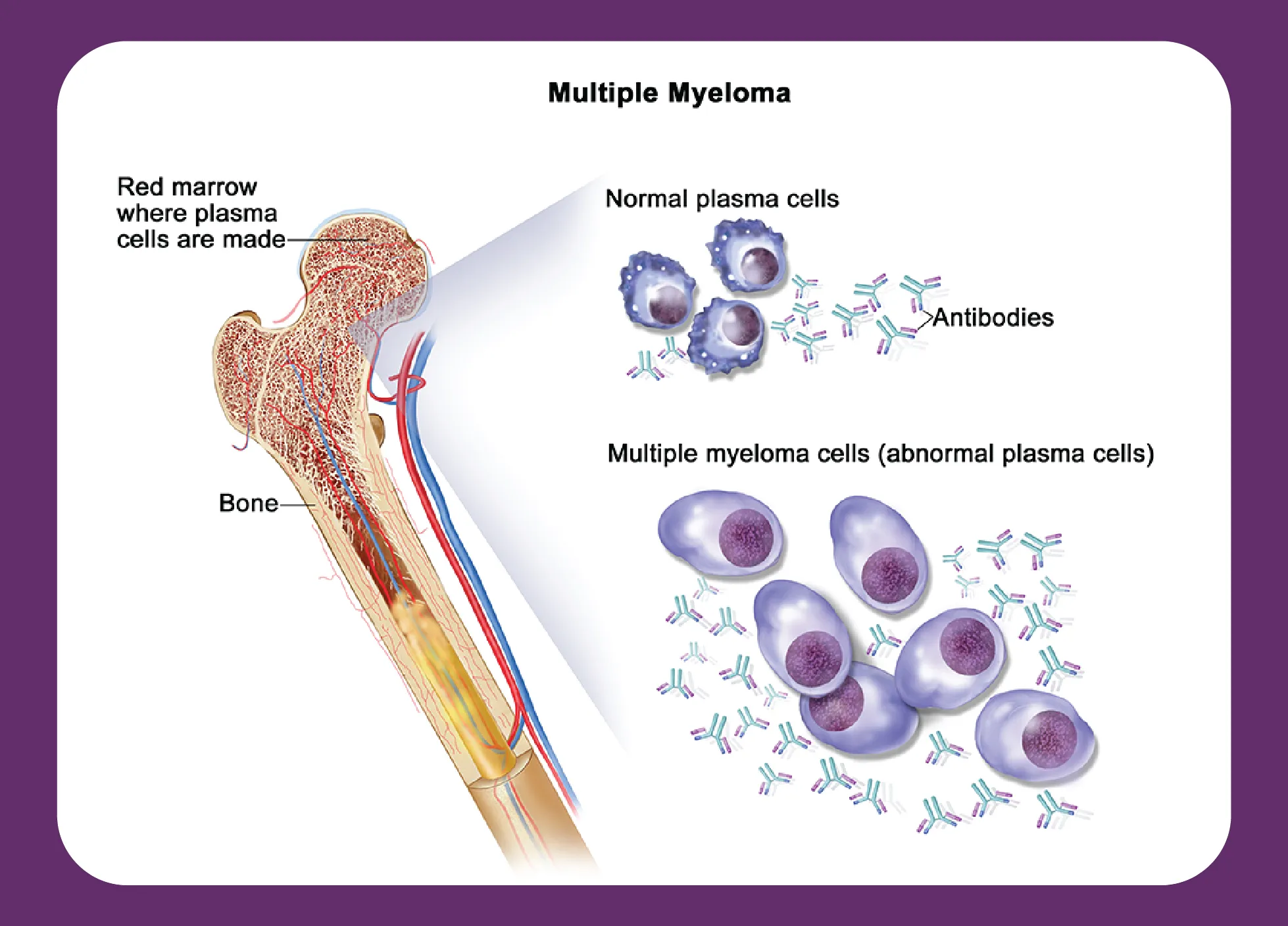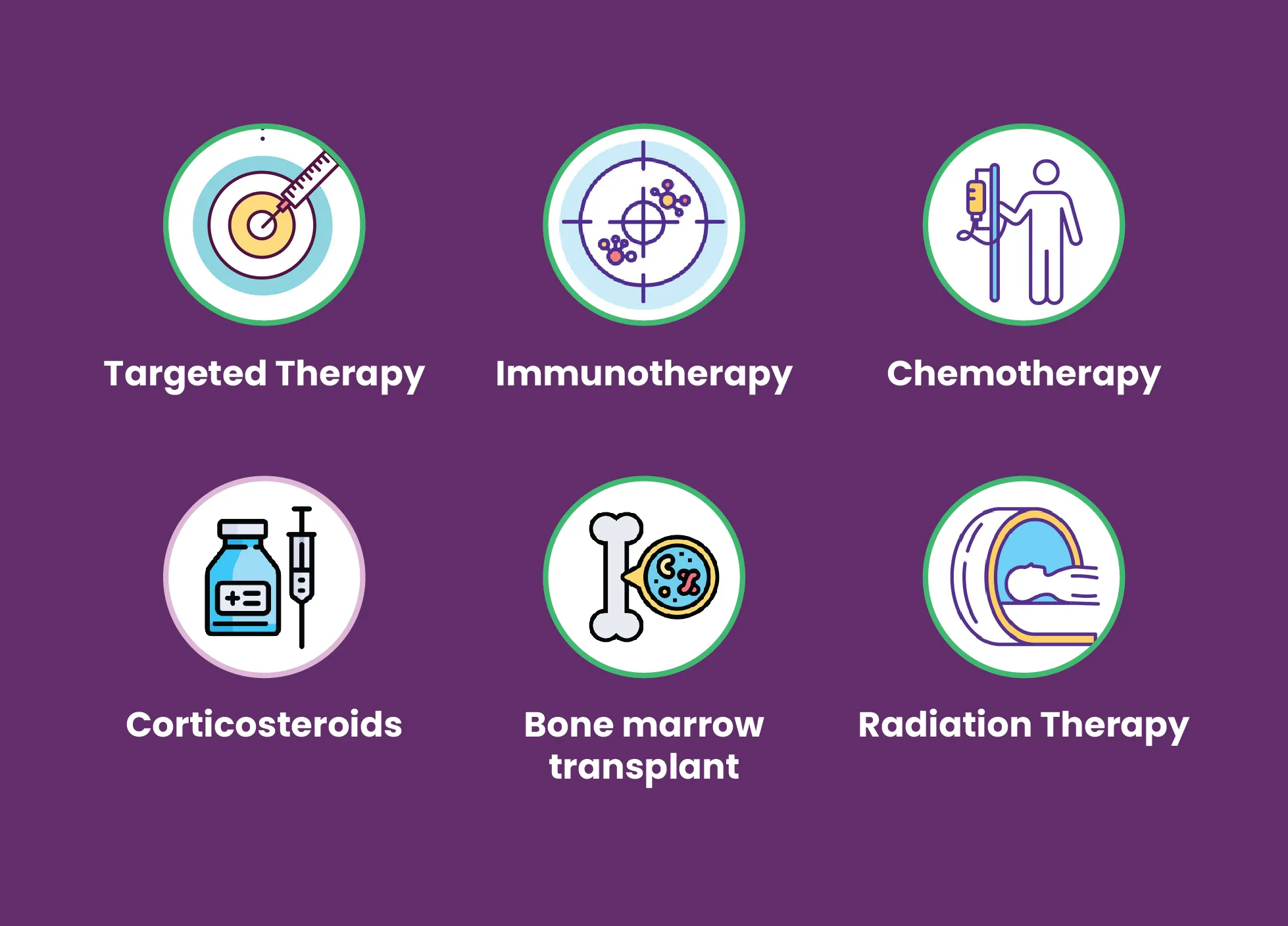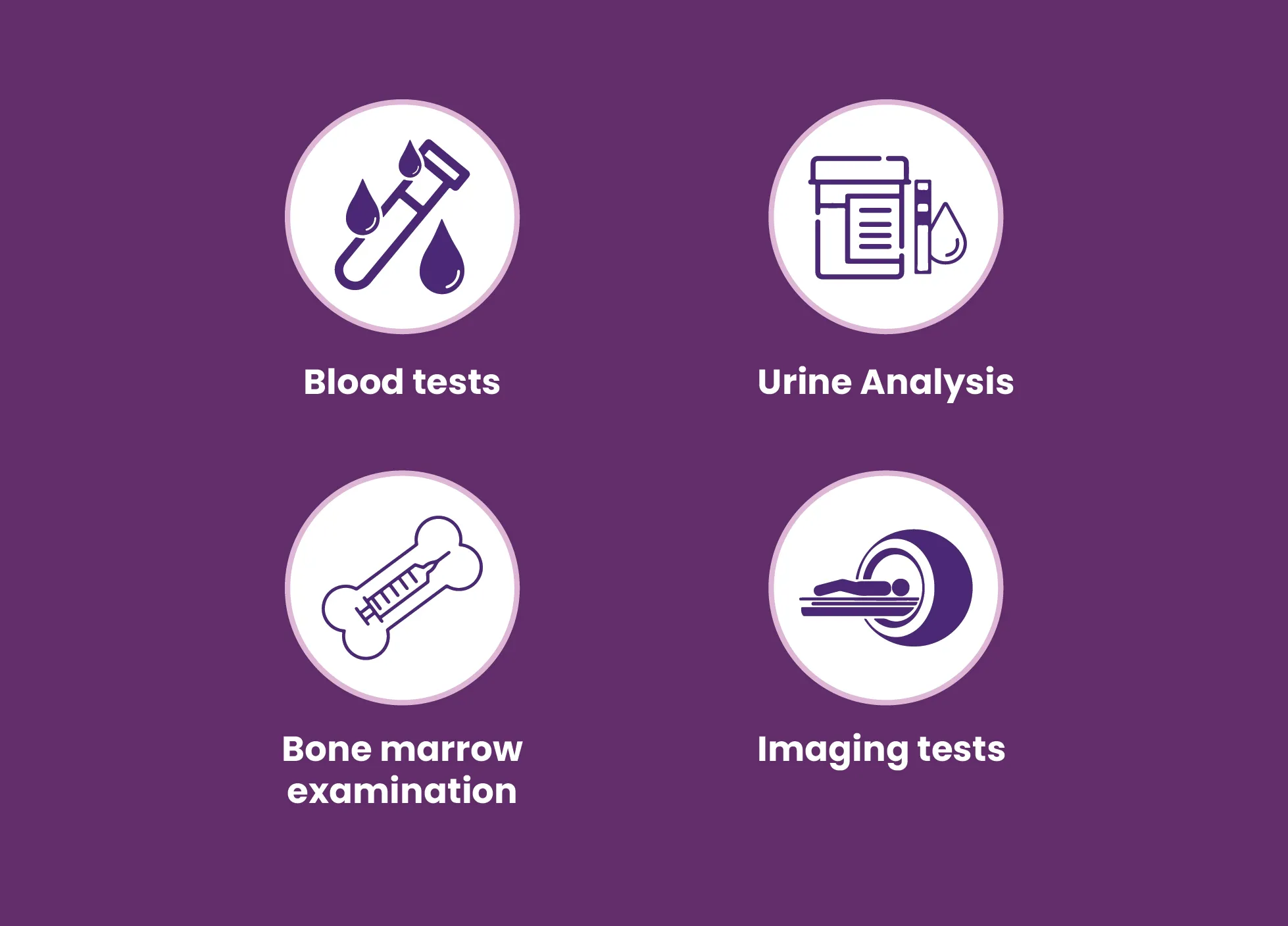Myeloma
About Myeloma:
A cancer of the plasma cells, myeloma is also known as multiple myeloma. White blood cells called plasma cells produce antibodies that defend us from infection. The proliferation of myeloma cells is excessive, shifting healthy bone marrow cells that produce red blood cells, platelets, and other types of white blood cells. The cancer cells are also known to produce abnormal proteins than can result in complications.
- Multiple myeloma: The most common type of plasma cell tumor, multiple myeloma starts in the bone marrow and can spread to other parts of the body.
- Solitary plasmacytoma: A single plasma cell tumor known as solitary plasmacytoma begins in one part of the body, typically a bone.
- Extramedullary plasmacytoma: A plasma cell tumor known as an extramedullary plasmacytoma appears in soft tissue, such as the lung or throat, away from bones.

Signs and Symptoms:
Signs and symptoms are not usually evident in early stages of the disease and it can vary depending on its progression. The signs and symptoms include:
- Bone pain, especially in your spine or chest
- Nausea
- Constipation
- Loss of appetite
- Mental fogginess or confusion
- Fatigue
- Frequent infections
- Weight loss
- Weakness or numbness in your legs
- Excessive thirst

Diagnosis:
Various tests and procedures used to diagnose multiple myeloma are:
- Blood tests: Myeloma cells produce M proteins, for which your blood may be analyzed in the laboratory. Beta 2 microglobulin is a different aberrant protein made by myeloma cells that may be found in your blood and provide your doctor with information about how aggressive your myeloma is.
- Urine Analysis: M proteins are seen when analysis of urine is done. M protein, also known as Bence Jones proteins are quite detectable in urine.

- Bone marrow examination: A sample of bone marrow is removed for laboratory testing. A long needle is inserted into bone (bone marrow aspiration and biopsy) and then the sample is collected. The given samples are examined for myeloma cells in the laboratory. A specialized test called fluorescence in situ hybridization (FISH) is done to analyze myeloma cells and identify gene mutations.
- Imaging tests: Bone problems associated with multiple myeloma can also be detected by imaging tests. The tests may Include X-rays, MRI, CT Or PET.
Treatment
The treatment might not be necessary if you are not experiencing any symptoms (also called as smoldering multiple myeloma). Multiple myeloma at an early stage or the slow growing myeloma will not require immediate treatment necessarily. Although, the physician will monitor the condition for any signs of progression of the disease, which might include regular blood and urine tests.
The various treatment options are:
- Targeted Therapy: The drugs used in targeted therapy concentrate on particular weaknesses present within cancer cells. Targeted drug treatments kill cancer cells by preventing these anomalies.

- Immunotherapy: In immunotherapy, the immune system is used to fight cancer cells. The body’s defense mechanism is often tricked by the cancer cells as they release a protein that helps them to hide from the immune system cells, which makes it difficult for the immune system to attack. This process is often interrupted by immunotherapy.
- Chemotherapy: When drugs are used to kill cancer cells, the treatment used is chemotherapy. The myeloma cells which are the fastest growing cells are killed by the drugs. Before a bone marrow transplant usually higher doses of chemotherapy drugs are given.
- Corticosteroids: The inflammation in the body is controlled by administration of corticosteroids. They are effective against myeloma cells also.
- Bone marrow transplant: Bone marrow transplant, also called as stem cell transplant is described as a procedure to substitute healthy bone marrow for the damaged bone marrow in your body. Blood forming stem cells from your blood are collected prior to bone marrow transplant. Diseased bone marrow is first destroyed by the use of high doses of chemotherapy, then the collected stem cells are administered into your body, which then begin to rebuild your bone marrow.
- Radiation Therapy: X-rays and photons are the sources from where the high-powered energy beams are obtained and which in turn are used for radiation therapy. This can quickly shrink the myeloma cells present in a particular area – for example the tumor that might have developed while collection of abnormal plasma cells which causes pain or is destroying a bone.
